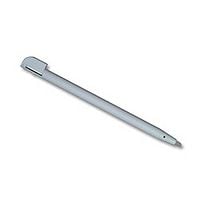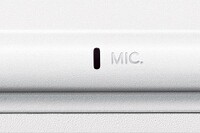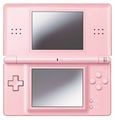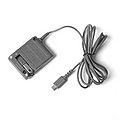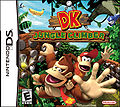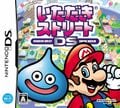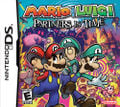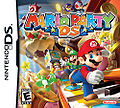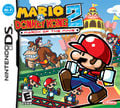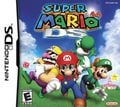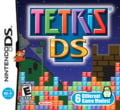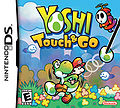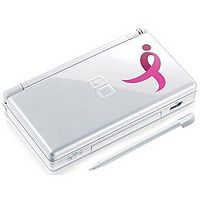Nintendo DS: Difference between revisions
(→Trivia) |
Lu-igi board (talk | contribs) No edit summary |
||
| Line 66: | Line 66: | ||
*''[[Mario & Luigi: Bowser's Inside Story]]'' - The [[Emoglobin|Emoglobins]] that run [[The Gauntlet|the Gauntlet]] and [[Cholesteroad]] are shaped like DS systems. Additionally, [[Dark Fawful]] uses a device that resembles a Nintendo DS to track down the [[Dark Star]]. | *''[[Mario & Luigi: Bowser's Inside Story]]'' - The [[Emoglobin|Emoglobins]] that run [[The Gauntlet|the Gauntlet]] and [[Cholesteroad]] are shaped like DS systems. Additionally, [[Dark Fawful]] uses a device that resembles a Nintendo DS to track down the [[Dark Star]]. | ||
*''[[WarioWare: Touched!]]'' - The main thing that [[Wario]] gets is a Nintendo DS. | *''[[WarioWare: Touched!]]'' - The main thing that [[Wario]] gets is a Nintendo DS. | ||
*In ''[[Donkey Kong Country Returns]]'', if the player does nothing for a while, [[Donkey Kong]] will start to play something that appears to be a Nintendo DS Lite. | |||
Additionally, Budgy, a character from the Nintendo DSi, has a phrase about [[Princess Peach]] infiltrating a castle in the DSi Sound mode. | Additionally, Budgy, a character from the Nintendo DSi, has a phrase about [[Princess Peach]] infiltrating a castle in the DSi Sound mode. | ||
| Line 111: | Line 112: | ||
*If the DS is turned on, on the date that the user has set as their birthday, a high pitched, more chimey sound will play. However, the DSi and DSi XL won't make this sound even if it's the player's birthday. | *If the DS is turned on, on the date that the user has set as their birthday, a high pitched, more chimey sound will play. However, the DSi and DSi XL won't make this sound even if it's the player's birthday. | ||
*There was a special release of a Pink Ribbon Nintendo DS Lite. For everyone who bought one, five dollars would be donated to the Breast Cancer Association. | *There was a special release of a Pink Ribbon Nintendo DS Lite. For everyone who bought one, five dollars would be donated to the Breast Cancer Association. | ||
==References== | ==References== | ||
<references/> | <references/> | ||
Revision as of 10:58, January 28, 2011
Template:Articleabout Template:System-Infobox Template:LLQuote
The Nintendo DS is a handheld game system released by Nintendo in 2004. It features two 3-inch screens, one of which is touch sensitive; "DS" actually stands for Dual-Screen. The system also introduces many new features to the Nintendo handheld lineup such as stereo sound, and audio input (microphone). As with previous major Nintendo handhelds, the DS also provides backwards compatibility for Game Boy Advance games (though this does not support multiplayer).
The DS is also the first Nintendo system to have a built-in wireless connection, allowing it to link up with other DS's without any wires or add-ons. This was also the first system Nintendo made to go online (Mario Kart DS being the first Nintendo-made online game), using the Nintendo Wi-Fi Connection.
Before the official name's release, Iris was the first codename for the handheld that would be the successor of the Game Boy Advance. Later it was called Nitro when the new device created had two screens.
The Nintendo DS (including DS Lite, DSi and DSi XL) sold 128.90 million units as of 2010, making it Nintendo's best selling video game console. Template:Fact
Nintendo DS Lite
A newer model named the Nintendo DS Lite was released in 2006 and contains all the features of the original Nintendo DS with some new features such as a significantly brighter screen (with four adjustment options), a lighter weight, and a smaller overall size (having the negative side effect of regular Game Boy Advance cartridge protruding out from the bottom, similar to playing a Game Boy or Game Boy Color cartridge in the Game Boy Advance).
The Nintendo DS Lite sold 89.19 million units as of 2010.Template:Fact
Nintendo DSi and DSi XL
- Main article: Nintendo DSi
A third model, called the Nintendo DSi, was announced on October 2nd, 2008. It is thinner and lighter than the Nintendo DS Lite, having removed the Game Boy Advance slot. However, this means that the Nintendo DS Rumble Pack, which was used with titles such as Mario & Luigi: Partners in Time, cannot be used. Two cameras, music playback functions, Wi-Fi, internet browser, larger screens, and a Wii-like channel interface were added.
The DSi is also able to download games from the Nintendo DSi Shop, stored on an SD Card or in internal memory. It was released in Japan on November 1st, 2008, in North America on April 5th 2009 and in Europe on April 3rd 2009. The DSi's front has a camera lens, and another, smaller lens is located where the mic was positioned on the Lite, allowing for photos to be taken with the DSi. Also, shortly after Nintendo releaded the DSi, they released a Nintendo DSi XL, and the extra XL stands for extra large, as the DSi XL is larger than the normal DSi. [1]
Nintendo 3DS
- Main article: Nintendo 3DS
The Nintendo 3DS is an upcoming handheld console that will be the successor to the Nintendo DS series to be released in early 2011. The console will have a 3D display without the need for glasses (known as autostereoscopy), using Parallax Barrier technology[2]. The Nintendo 3DS was first revealed during the E3 2010 in Los Angeles, California.
The prime feature of the handheld is the 3D display, which is shown in the upper screen of 3.5 inches. The Nintendo 3DS also includes a camera on its inner side located at the top of the upper screen and two outside over the lid, giving the capability to take 3D photos and also 3-Dimensional videos. A 3D depth slide, a motion sensor and a gyroscope were added for the handheld, and an analog stick on its inner side along with the direction pad. Some buttons were moved such as Select and Start, that are found currently below the bottom touch screen. The power button is now located below the A, B, X and Y buttons. The new button Home, which allows users to enter directly the system's menu, is found between the Start and Select buttons, like the Wii. The handheld also is able to find Wireless Connection spots and other Nintendo 3DS automatically for online play[3]. It is backwards compatible with DS and DSi games.
The Nintendo 3DS will be available upon its release date in two colors: Aqua Blue and Kosmo Black.
Stylus
The Stylus is a pencil-like accessory that comes with the Nintendo DS. The instrument is often used in conjunction with the Nintendo DS touch screen. Usually, the stylus is used to make menu selections, which the player can accomplish by bringing the stylus in contact with their selection on the touch screen. The stylus is often helpful or required in gameplay. For example, New Super Mario Bros., Super Mario 64 DS, and Wario: Master of Disguise require the use of the stylus for mini-games such as Wanted! and Roach Smash, and the stylus is also necessary to make Mini Mario toys jump, in Mario vs. Donkey Kong 2: March of the Minis.
On the DS, the stylus slot is located on the back, and is inserted downwards, relatively to the DS itself. On the DS Lite and DSi, however, it was relocated to the right side of the system, and is inserted from right to left, relatively to the DS Lite or DSi.
The stylus for the DS is noticeably thinner than the stylus for the DS Lite. A DS generally comes with two styluses, and extras can usually be purchased from stores or special ones from promotions.
See Also
Microphone
The Microphone is a feature on the Nintendo DS. On the original DS, it is at the lower left-hand corner, right below the screen. On the DS Lite, it is at the middle in between the two screens. On the DSi, this position is replaced by the Camera, and the Microphone was moved about 2 cm to the right. Blowing into it will allow events to happen in the game that the player is playing, such as Toad Jump. In other games, the player must say words into the Microphone. In Mario & Sonic at the Olympic Games, the player must clap into the mic to gain inspiration from the crowd in Long Jump and Triple Jump. Also, in the game Mario & Luigi: Bowser's Inside Story, the player needs to use the microphone to blow fire whenever Bowser gets large.
In-Game References
- Mario & Luigi: Partners in Time - Shroobs call Shroob UFOs using a silver, flip-top communicator. Because the Nintendo DS has the capability to send verbal messages to friends, this may be a reference to the Nintendo DS. Additionally, Professor Elvin Gadd is shown to own a Nintendo DS with an apparent time radar he used to locate Princess Peach at the beginning of the game; he later uses the DS to operate the Hydrogush 4000 with it.
- Super Smash Bros. Brawl - One of the names that can appear whenever a player presses the random button when they're naming their custom stage is DS. Also, a stage based on the PictoChat included in the Nintendo DS makes an appearance in Brawl, complete with its very own DS emblem.
- Mario Kart DS - One of the battle courses is the Nintendo DS.
- Super Paper Mario - There is a computer console called the Dining Specializer (also known as DS as well), which is modeled after the Nintendo DS Lite. There is also a two-screened handheld that resembles a Nintendo DS known as a Training Machine, which the fortune teller Merluvlee wanted to use to train her brain (is a reference to the popular DS title, Brain Age).
- Super Mario 64 DS - Bowser makes several references about the Touch Screen, saying phrases like "Keep that Touch Screen smoking!".
- Mario & Luigi: Bowser's Inside Story - The Emoglobins that run the Gauntlet and Cholesteroad are shaped like DS systems. Additionally, Dark Fawful uses a device that resembles a Nintendo DS to track down the Dark Star.
- WarioWare: Touched! - The main thing that Wario gets is a Nintendo DS.
- In Donkey Kong Country Returns, if the player does nothing for a while, Donkey Kong will start to play something that appears to be a Nintendo DS Lite.
Additionally, Budgy, a character from the Nintendo DSi, has a phrase about Princess Peach infiltrating a castle in the DSi Sound mode.
Galleries
System Gallery
Commemorative DSi of the Super Mario Bros. 25th Anniversary.
Game Gallery
- Cover DKRDS.png
- Nds-mariokart-jap.jpg
- NewSuperMarioBrothers.jpg
- Superpeach.jpg
- 250px-Wariods.jpg
- 924913 59686 front.jpg
Trivia
- If the DS is turned on, on the date that the user has set as their birthday, a high pitched, more chimey sound will play. However, the DSi and DSi XL won't make this sound even if it's the player's birthday.
- There was a special release of a Pink Ribbon Nintendo DS Lite. For everyone who bought one, five dollars would be donated to the Breast Cancer Association.

